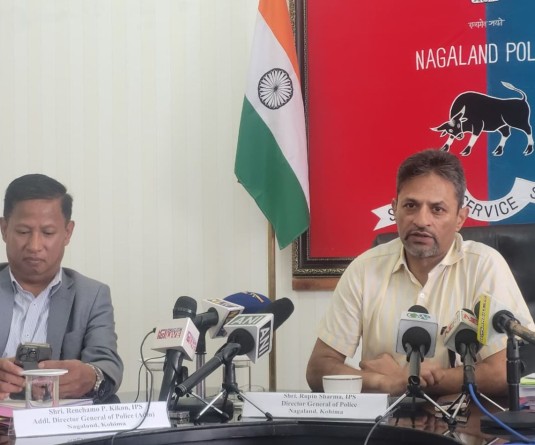Construction work on the new railway line connecting Dimapur to Kohima is progressing steadily. (Photo Courtesy: NFR)
.jpg)
.jpg)
.jpg)
.jpg)
.jpg)
.jpg)
Maligaon, March 28 (MExN): In a significant development for the north-eastern region of India, construction work on the new railway line connecting Dimapur to Kohima is progressing steadily.
The project, which is being undertaken by the Northeast Frontier Railway Construction Organization at an anticipated cost of Rs 6,663 crore, aims to connect all the state capitals of the north-eastern states, the Northeast Frontier Railway (NFR) informed on Tuesday.
According to a press release issued by NFR, Chief Public Relations Officer (CRPO), Sabyasachi De, the 82.5 km long railway line project, which takes off from the Dhansiri station of Assam to Zubza adjacent to Kohima, includes the construction of eight new stations and 24 major bridges, 156 minor bridges, six Road Over Bridges, 15 Road Under Bridges, and 21 Tunnels of 31 km length. The tunnel No. 7 between Pherima to Piphema is the longest tunnel of this project which is of 6520 metre length, and the project is divided into three phases for ease of commissioning, it said.
The new stations include Dhansiri, Dhansiripar, Shokhuvi, Molvom, Pherima, Piphema, Menguzuma and Zubza.
De informed that the first phase of 16.5 km from Dhansiri to Shokhuvi has been completed in October 2021, and passenger train services from Shokhuvi to Naharlagun in Arunachal Pradesh and Mendipathar in Meghalaya have been introduced recently to enhance intra-regional rail connectivity to various northeast states.
The next phase of the project, from Shokhuvi to Pherima, is expected to be completed very soon, and the entire project up to Zubza is targeted to be completed by 2026. Once completed, the new rail connectivity will bring Nagaland's capital city, Kohima, onto the broad gauge railway map of the country, De stated in the release.
According to the CRPO, apart from providing better connectivity to the north-eastern states, the new rail connectivity is expected to help transport food grains and other infrastructure items to the state at a much cheaper cost from other parts of the country, thereby benefitting the local people. The economy of the state is also expected to receive a boost.




